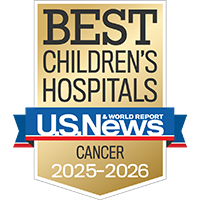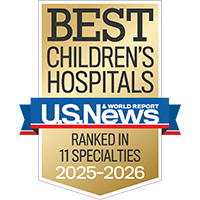Soothing the soul
Our music therapy program nurtures patients with bedside serenades, rap workshops and more.
Find out more

Langerhans cell histiocytosis, or LCH, is a rare disorder in which too many Langerhans cells (a type of white blood cell) build up in the body. These excess Langerhans cells often form masses called granulomas.
In about 80% of children with LCH, one or more granulomas form in bones. Granulomas can also grow in many other parts of the body, including the skin, lungs, liver, spleen and bone marrow.
Although there's debate over whether LCH is a type of cancer, it behaves like cancer in its most serious form and is treated by cancer specialists. Treatments include oral and topical medications, chemotherapy and sometimes radiation therapy.
LCH affects children more often than adults, frequently between 1 and 3 years of age. In young kids, LCH may affect many parts of the body simultaneously. In children over 5, LCH frequently is limited to the bones. When only one organ is involved, the child needs less intense treatment.
LCH was previously known by several other names, including histiocytosis X, eosinophilic granuloma, Hand-Schüller-Christian disease and Letterer-Siwe disease.

Top 10 in the nation and best in Northern California for cancer care

Ranked among the nation's best in 11 specialties
In about half of all people with LCH, the Langerhans cells have mutations in a gene called the BRAF gene. These mutations happen randomly – they aren't inherited. Because the BRAF gene plays a role in cell development, the mutation may allow Langerhans cells to grow and divide uncontrollably. Scientists also have identified changes in other genes in some patients with LCH.
Other factors, such as viral infections and exposure to toxins, may play a role in LCH as well.
LCH symptoms depend on which body parts are affected.
Bones
LCH can involve any bone, but among kids, it typically affects the skull, thigh bones, ribs, vertebrae or upper arm bones. The child may experience pain and swelling at the site. The affected bone is prone to breaking.
Skin
Signs of LCH in the skin include:
Lymph nodes or thymus
If LCH involves the lymph nodes (bean-shaped organs that make and store infection-fighting cells) or thymus (a gland in the neck that's also part of the lymphatic system), symptoms may include:
Pituitary gland
The pituitary is a hormone-producing gland at the base of the brain. When LCH affects the pituitary, symptoms include:
Liver or spleen
Signs of LCH in the liver or spleen include:
Mouth
Signs of LCH in the mouth include:
Lungs
Lung involvement is more common among adult LCH patients than in children. Signs include:
Central nervous system
When LCH involves the central nervous system (brain and spinal cord), it may cause:
Bone marrow
When Langerhans cells crowd out blood-forming cells in the bone marrow, patients may experience:
Symptoms seen in LCH can be caused by other conditions. For an accurate diagnosis, your child should be evaluated by a doctor.
If LCH is suspected, your child's doctor may order one or more of the following tests:
A bone marrow aspiration and biopsy procedure usually takes 15 to 20 minutes. Understanding that kids and parents often find these tests frightening, we offer the option of performing them under general anesthesia (with the patient completely asleep) whenever possible. To control pain, we inject a fast-acting local anesthetic deep under the skin, numbing the puncture site.
We usually use the same site for both aspiration and biopsy. Although the biopsy needle may look scary, we remove only a very small sample of the spongy marrow. The technique is similar to bone marrow aspiration except that a side-to-side motion of the needle is needed to collect the sample. This is the most painful part of the procedure.
Treatment for LCH depends on the extent of the disease and which organs or tissues are involved. LCH in the liver, spleen or bone marrow is considered higher risk than LCH in the bones, skin, lymph nodes or pituitary gland.
In some cases, LCH goes away on its own. Your child may only need regular appointments to monitor the status of the disease.
If treatment is needed, options include:
LCH sometimes comes back after treatment. Your child will need regular follow-up visits to check for signs of recurrence or complications from the disease or treatment.
This information is for educational purposes only and is not intended to replace the advice of your child’s doctor or other health care provider. We encourage you to discuss any questions or concerns you may have with your child’s provider.

Soothing the soul
